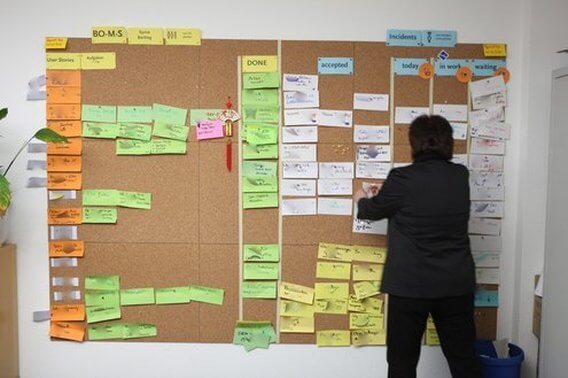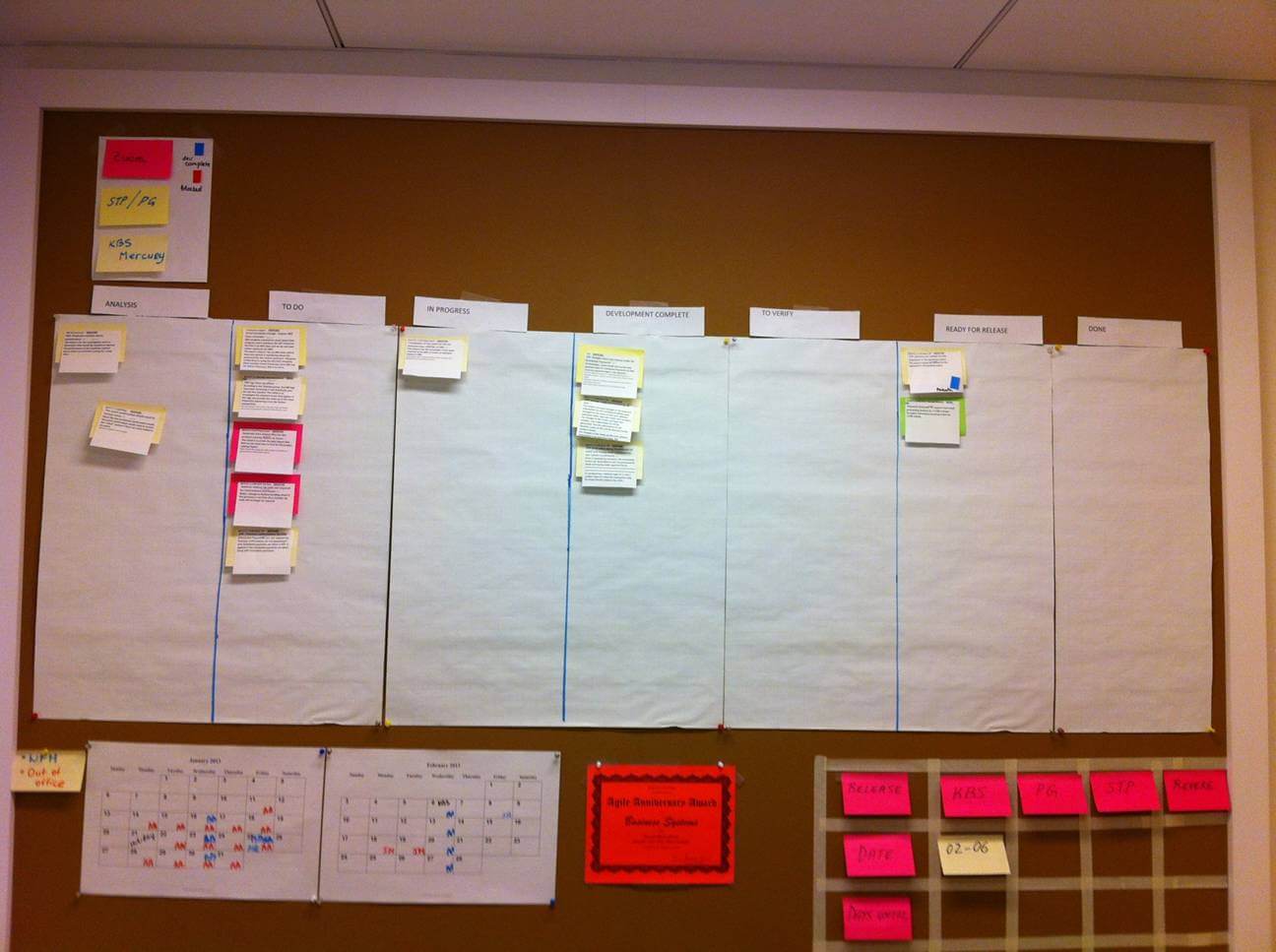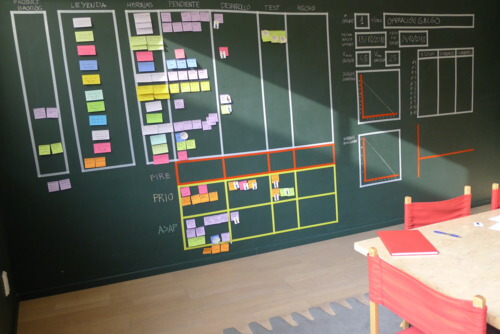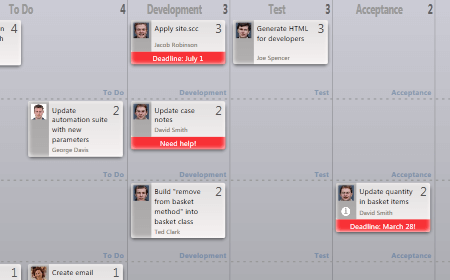 As most of you know, Scrumban is a mixture of Scrum and Kanban methodologies made in search of a stricter Kanban or a looser Scrum. While there are not many companies that go to Scrumban straight out of the gate, many find their way into it after a while and settle in a comfortable balance between strict and loose that this approach brings.
As most of you know, Scrumban is a mixture of Scrum and Kanban methodologies made in search of a stricter Kanban or a looser Scrum. While there are not many companies that go to Scrumban straight out of the gate, many find their way into it after a while and settle in a comfortable balance between strict and loose that this approach brings.
Just as you might expect, every team strikes this balance a little differently and this is very clear looking into their boards. To compare, lets take a look at just a few of the most interesting Scrumban boards.
Back office manager
The board used by Wibas, is a great example of Scrumban. It is a nice mix of the two methodologies that allows the company to manage their back office efficiently and with ease, while keeping the priorities straight.
Personal Scrumban
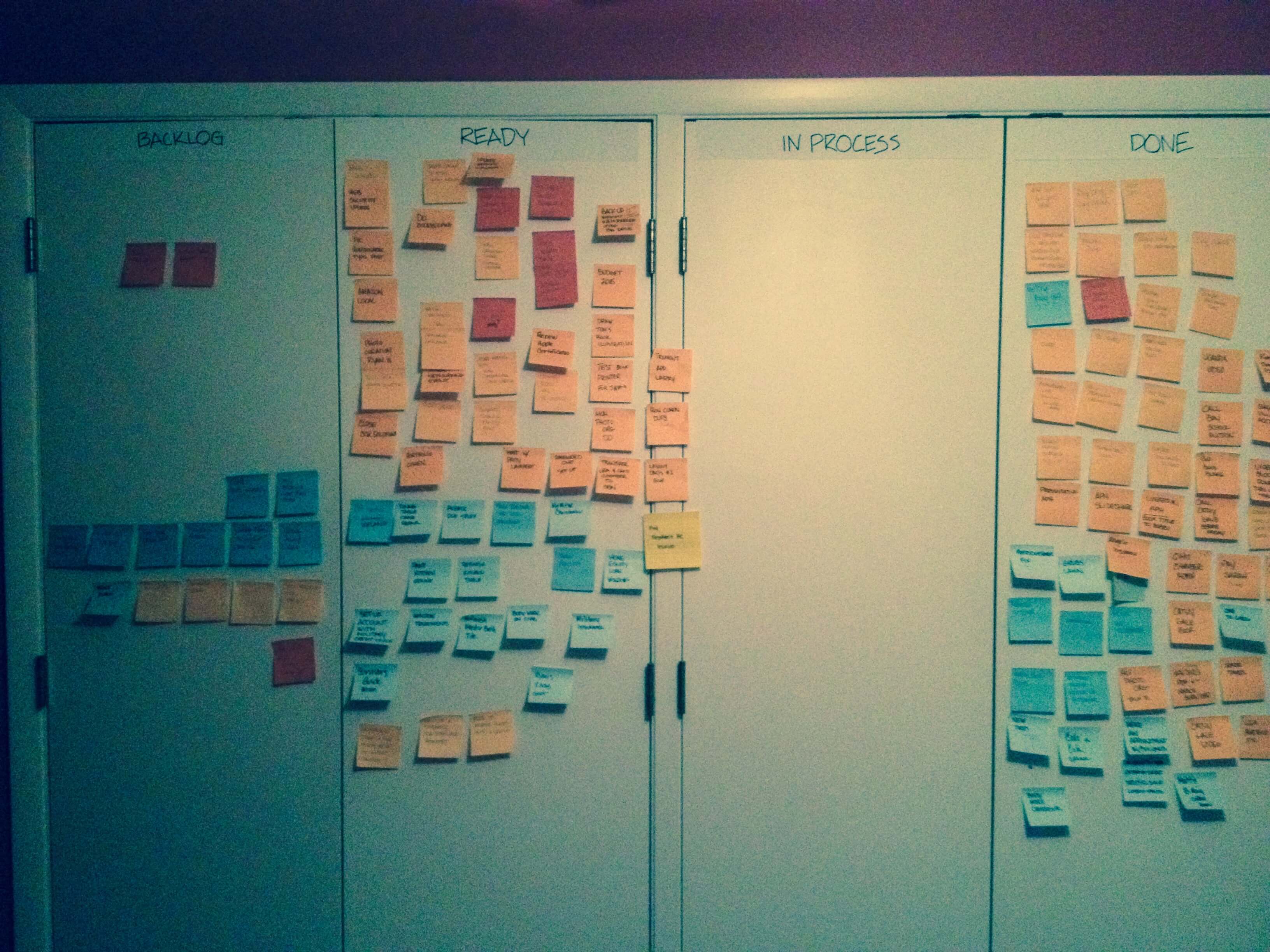
Next, we have an example of a Personal Scrumban board by SpamCast. This a great way to organize your personal work and to make sure to stay on top of the project. However, even while working alone, you still have to make sure to plan your work in order to complete the necessary tasks on time. So make sure to stick with the backlog grooming and your version of a daily stand-up to stay on top of your game.
Keeping the cadence
This next board, presented by Mariya Breyter, allowed the team to keep the Scrum cadence while becoming more lean. The team kept the sprint reviews and retrospectives, set up clear objectives, prioritized their work, were able to provide flexibility and minimized waste as well as the work in progress to avoid overwhelming the team with too much going on. This gave the team a nice mixture of Scrum and Kanban and allowed to visualize work easily.
Scrum interpretation
The board from Ismail, came as a result of their very first Scrumban attempt. They chose to leave more Scrum details in their process and to only incorporate Kanban practices that would benefit them, showing that Scrumban can be interpreted in various ways.
The first meeting
The last board, presented by Carlos Iglesias Pichel, was composed during the first sprint planning of the team. After a few moths of research, the team has decided to go with Scrumban as it could provide the most versatility and ability to represent the product environment the best. This is what they came up with on that first day.
Do you use Scrumban or have an interesting process? Share your boards in the comments below!

